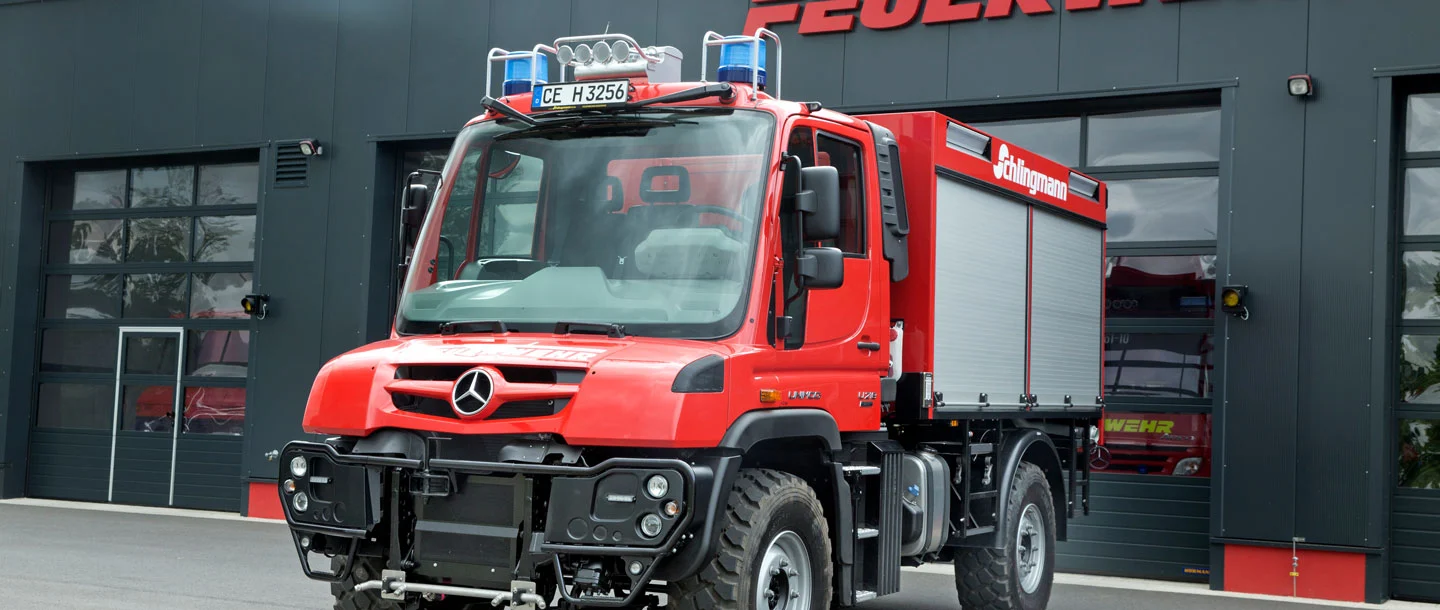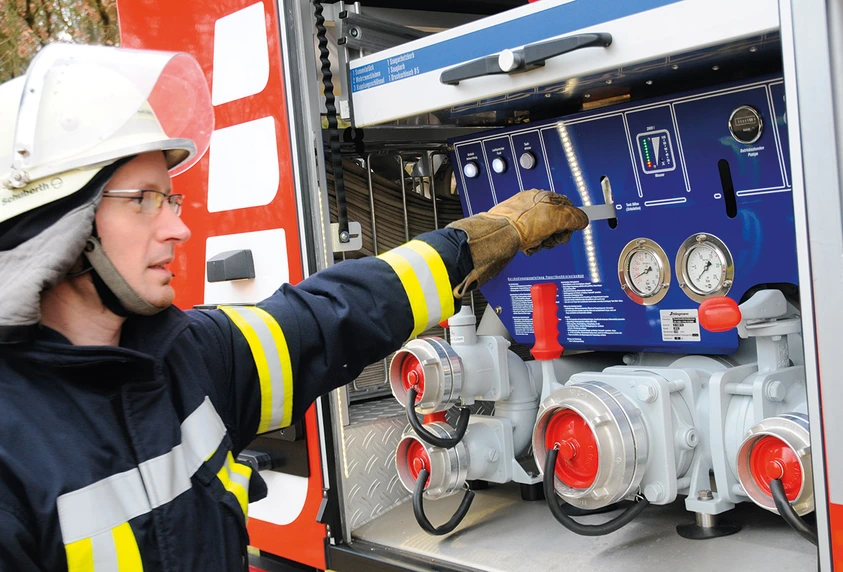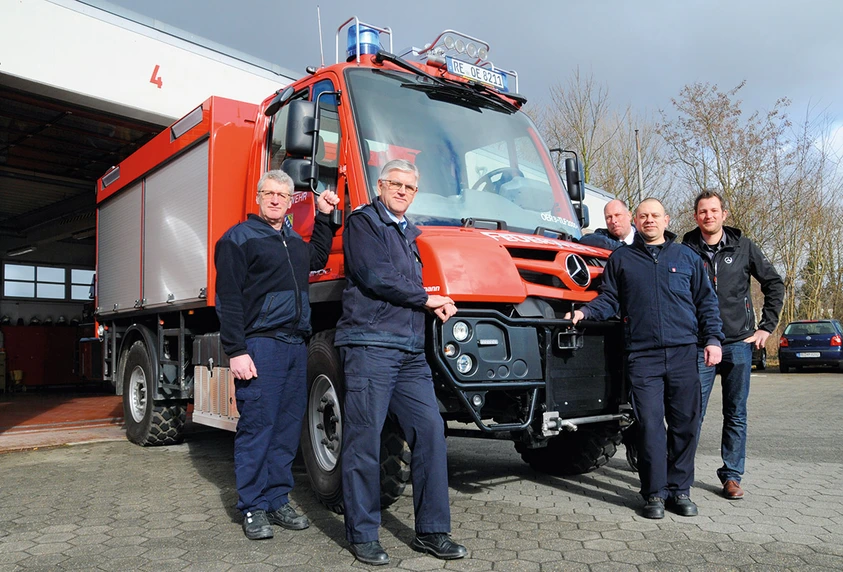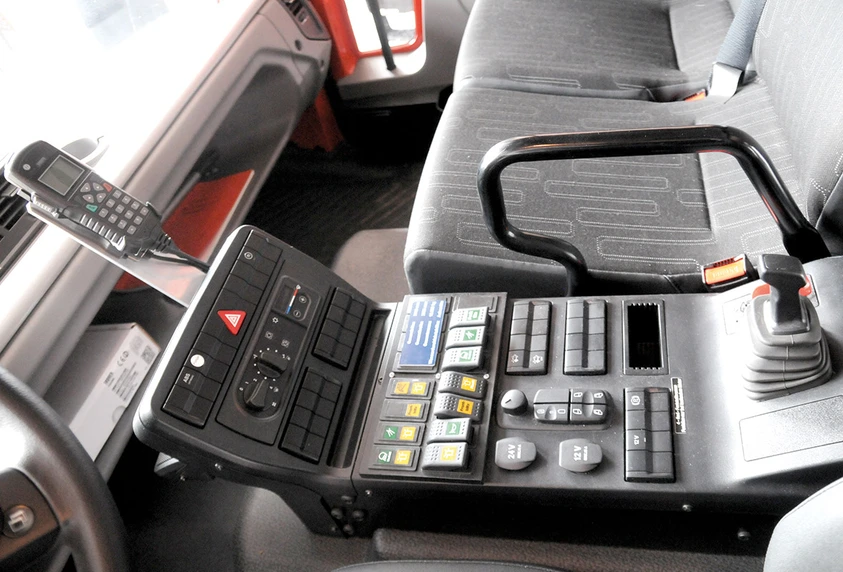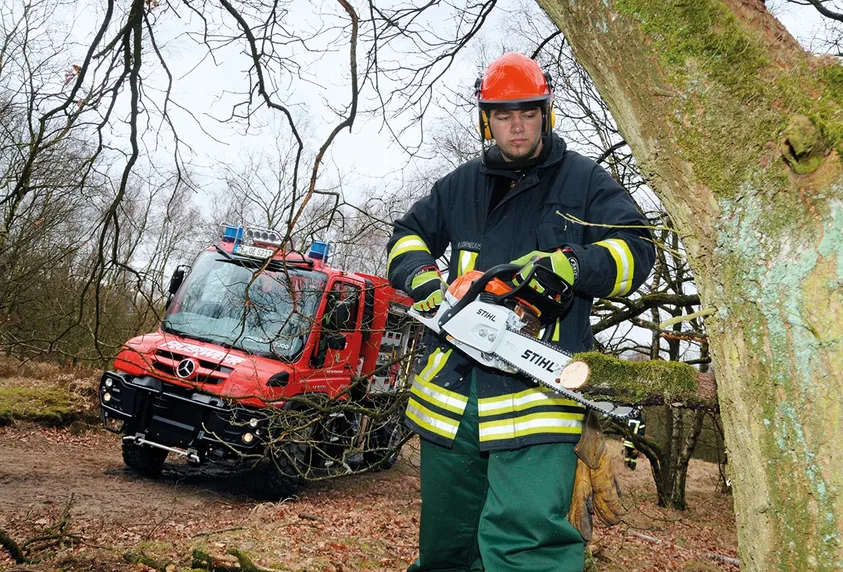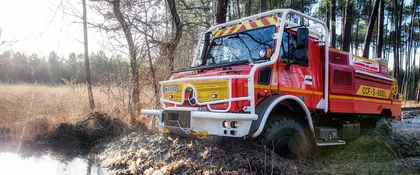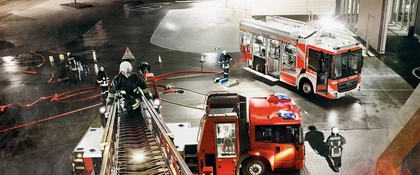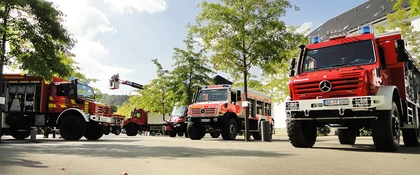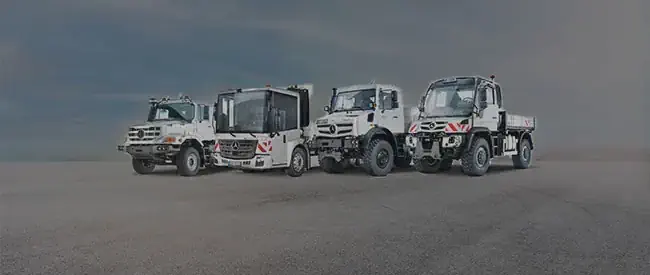Unimog U 218 – customized to meet specific needs.
Standard fire service tank tenders are often not up to the job in dealing with fires away from surfaced roads in rural areas. They are too big, too heavy, and too hard to manoeuvre close enough to the seat of the fire. The volunteer fire service in Oer-Erkenschwick has been operating a specially fitted-out Unimog as a tank tender since late 2015.
The siren blares at an unmissable 120 decibels. Despite the morning rush hour, the road ahead is clear for Marco Röder. The destination, a camp-site, is quickly reached in just eight minutes. So what's on fire: a barbecue, a caravan awning, or something more serious? "Well, fortunately it's just an exercise", the fireman explains while his colleagues efficiently roll out the 50-metre hoses and set about fighting the fictional flames. Michael Neumann, Lutz Böhm and Florian Cornelius are a well-rehearsed team. "Speed is one thing. But everything has to be done right," asserts Michael Wolters, press spokesman of the Oer-Erkenschwick fire service. He has come along to provide his social media feed with up-to-date photos of the new Unimog U 218 in action.
A winning team.
The fire service covering the district of some 30,000 people is well staffed, with over 100 volunteers. Michael Wolters is responsible for its public relations, as well as skippering Erkenschwick's engine 1, covering the town centre. Engine 2 covers the industrial estates, small businesses and residential areas. Engine 3 operates on the edge of the Haard forest. "In that area there is housing but also lots of agriculture, and extensive forest – not something our big red engines can handle."
Extensive specialist equipment.
The fire service had previously been using a U 20 as a compact offroader in the Haard. "The Unimog was manoeuvrable enough to handle fires and emergency rescues." But in 2015 a new unit was procured, for environmental and age reasons. The problem, however, was that the selected U 218 was too short according to the DIN standard for fire-fighting tank tenders with 2000-litre water tanks as modified in April 2011. So the wheelbase was extended from 2.8 to 3.6 metres. This provides sufficient space for all the fire-fighting systems, protective clothing, and emergency rescue, first-aid and resuscitation equipment. A flow rate of over 100 l/min is required to attain a water pressure of up to six bar. A built-in heat exchanger ensures that the water does not get too hot.
Special functions to avoid high temperatures.
Heat is not just a problem for the fire-fighting operation, it is also undesirable on the deep-treaded 20-inch tyres. To prevent the tyres from getting too hot, fire tender body specialist Schlingmann has mounted a clever protective spray system on the front, with its pressure supply controlled by the accelerator pedal. Spray heads pressurised at up to eight bar protect the wheels and tyres against excessive heat.
Would you like more information about Unimog in firefighting operations and civil protection missions? Simply ask for our cost-free info package:
"With the U 218 L we can get much closer to remote fires in forests and fields. That's just not possible with the big vehicles." It's not only the Unimog that's small and manoeuvrable – the new fire-fighting system is perfectly adapted to the little 177 bhp power pack. "The fittings are much more easy to handle than the standard 42, 52 or 70 mm hoses," Lutz Böhm explains.
Under test: Mobile fire-fighting backpacks.
According to the DIN 14530-18 standard, the tool kit of the fire-red newcomer, radio code named Oer TLF 2000-1, includes an axe, splitting maul, pick, shovel, spade and brush, as well as a new 5.5 kg multi-function implement, the so-called Halligan Tool. The 750 mm long tool, similar to a crowbar, with slotted hatchet tips, originates from the USA, and combines two offset hatchet blades and a tapered pick. "It can also be used to smash in windows," Wolters reports. Mobile fire-fighting backpacks are also carried on-board. The 19-litre special tanks are being tested here on-site by Lutz Böhm and Florian Cornelius.
Great interest during the fire service presentation by the Unimog general distributor RKF-Bleses.
Even the exhaust is specially adapted for fire service use.
Daimler launched the first U 218 as the TLF 2000 fire-fighting tank tender unit at last year's Interschutz fair – and immediately made its first sales. "More are now in the pipeline, because the response has been better than expected," reports Andreas Beckschulze from Münster-based Unimog distributor RKF-Bleses. Fire-fighting applications are not a new field for the multi-purpose vehicle. The Unimog has been providing top-class fire-fighting and disaster-relief solutions since the post-war era. The top choices are of course models with high off-road capability, operated primarily in Spain, France and Greece to-fight forest and scrub-land fires. "But thanks to their compact design, the new small models are ideally suited to specialist applications and areas with moderate topography," Beckschulze comments.
The manoeuvrable four-cylinder unit in the Euro-6 version incorporates all the essential features. The exhaust, for example, has been moved downwards – a tricky design modification, but advantageous in practice. The front power take-off shaft has been eliminated. On the U 218 different features are called for: Siren units, for example, to grab the attention of even the most inattentive motorists on the road. Marco Röder presses the relevant buttons to demonstrate as the perfectly executed exercise comes to an end. The four-tone compressed air horn is unmissable, clearing the way for the red engine well ahead.
Source: Unimog Magazine 2/2016
Text: Gerfried Vogt
Photos: Martin Heying
